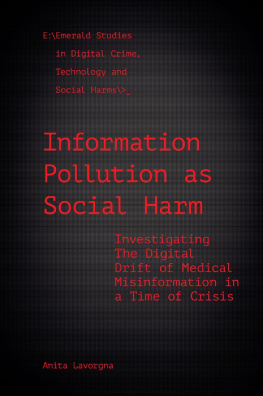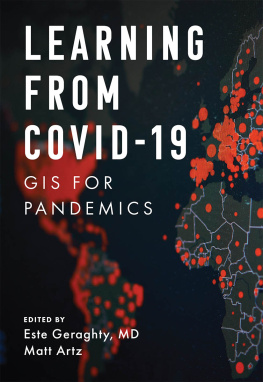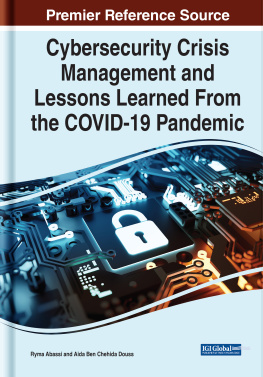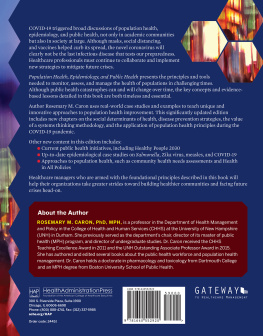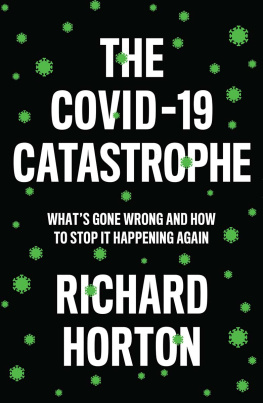INFORMATION POLLUTION AS SOCIAL HARM
EMERALD STUDIES IN DIGITAL CRIME, TECHNOLOGY AND SOCIAL HARMS
Series Editors: James Martin, Swinburne University of Technology, Australia Asher Flynn, School of Social Sciences, Monash University, Australia
Previous Volumes:
Cryptomarkets: A Research Companion; James Martin, Jack Cunliffe, Rasmus Munksgaard
The Emerald International Handbook of Technology-Facilitated Violence and Abuse; Jane Bailey, Asher Flynn, Nicola Henry
Over the past two decades, digital technologies have come to permeate ever more aspects of contemporary life. This trend looks to continue and has profound implications for the social sciences, particularly criminology, with technology-facilitated offences now arguably constituting the most dynamic and rapidly growing area of contemporary crime. Despite this development, the discipline of criminology has been slow to embrace the critical study of technology-facilitated offences and social harms, with most research conducted in this area still informed by a relatively narrow range of cybersecurity and applied criminological perspectives.
Emerald Studies in Digital Crime, Technology and Social Harms is part of a new movement within criminology and related disciplines to broaden this narrow focus and engage critically with new trends in technology-facilitated offending and victimisation. The book series uses a combination of critical criminological, socio-legal, and sociological perspectives to consider a wide range of technology-facilitated offences and harmful social practices, ranging from digital surveillance, cyberbullying and image-based sexual abuse through to global darknet drug trading.
EDITORIAL BOARD
Asia Pacific
Professor Mark Andrejevic, Monash University, Australia
Professor Rod Broadhurst, Australian National University, Australia
Dr Akane Kanai, Monash University, Australia
Dr Monique Mann, Queensland University of Technology, Australia
Dr Brady Robards, Monash University, Australia
Dr Campbell Wilson, Monash University, Australia
Europe
Professor Ross Coomber, University of Liverpool, UK
Dr Rutger Leukfeldt, Netherlands Institute for the Study of Crime and Law Enforcement, Netherlands
Dr Adrian Scott, Goldsmiths, University of London, UK
Professor Majid Yar, Lancaster University, UK
North America
Associate Professor Michael Adorjan, University of Calgary, Canada
Professor Walter DeKeseredy, West Virginia University, USA
Professor Benot Dupont, University of Montreal, Canada
Associate Professor David Maimon, Georgia State University, USA
Assistant Professor James Popham, Wilfrid Laurier University, Canada
INFORMATION POLLUTION AS SOCIAL HARM
Investigating the Digital Drift of Medical Misinformation in a Time of Crisis
ANITA LAVORGNA
University of Southampton, UK
United Kingdom North America Japan India
Malaysia China
Emerald Publishing Limited
Howard House, Wagon Lane, Bingley BD16 1WA, UK
First edition 2021
2021 Emerald Publishing Limited
Reprints and permissions service
Contact:
No part of this book may be reproduced, stored in a retrieval system, transmitted in any form or by any means electronic,mechanical, photocopying, recording or otherwise without either the prior written permission of the publisher or a licence permitting restricted copying issued in the UK by The Copyright Licensing Agency and in the USA by The Copyright Clearance Center. No responsibility is accepted for the accuracy of information contained in the text, illustrations or advertisements.The opinions expressed in these chapters are not necessarily those of the Author or the publisher.
British Library Cataloguing in Publication Data
A catalogue record for this book is available from the British Library
ISBN: 978-1-80071-522-6 (Print)
ISBN: 978-1-80071-521-9 (Online)
ISBN: 978-1-80071-523-3 (Epub)
To G. and L., for being the best company I could wish for in this strange year.
Our new device of doubt delighted the great public, which snatched the telescope from our hands and turned it on its tormentors
Bertolt Brecht, Life of Galileo
CONTENTS
List of Figures
Acknowledgments
LIST OF FIGURES
ACKNOWLEDGMENTS
A special thanks to AIRIcerca (the Association of Italian Researchers in the world), AIRInforma (its science popularization journal), and Il Post among the Italian online daily newspapers for helping me stay the course when trying to navigate a sea of polluted information.
SOCIAL HARMS IN PANDEMIC TIMES
1.1. INTRODUCTION
In early 2020, the world found itself facing a new challenge, with the outbreak of a novel coronavirus disease COVID-19, as it was first identified in December 2019 in the Hubei province of China spreading across countries, to the point that the outbreak was recognized as a pandemic by the World Health Organization (WHO) on March 11, 2020. The virus can cause, among other things, a severe acute respiratory syndrome. The mortality rate directly linked to this virus is estimated to be relatively low, but the impact on public health during the pandemic is considered extremely serious, with some people suffering long term consequences, and because of the progressive breakdown of many healthcare systems due to the number of patients likely to require critical care.
In Italy, the country at the core of the study reported in this book, the virus was first confirmed to be present on January 31, 2020; up to this date, national media reported news of the so-called (at that time) Chinese coronavirus, and the possibility of facing a pandemic was not part of public debates. In February, with a sharp increase in contagions and deaths, first only some municipalities in northern Italy and then the Lombardia region and whole provinces were placed under quarantine. During the second and third weeks of March, through a series of decrees, the quarantine was extended throughout the country, further limitations restricting the movement of people were imposed, and nearly all commercial activities except for essential businesses and industries were prohibited. In these first stages, the Italian case has been important in framing public health discussions in other countries and, especially in Europe, highlighting a number of concerns around the speed of the virus and potential issues with hospitalization and intensive care if services become overstretched in certain localities (Brown, 2020). Over the Summer, when the situation eased in the country, many restrictions were lifted, and then reinstated, depending on the progression of local outbreaks. At the time of writing, the situation is still very dynamic: after a second wave in Autumn and fears of a new rise in numbers linked to the Winter holidays and a new virus variant, new restrictions and (partial) lockdowns in Italy, as well as in other European countries, are starting, are still under development, or are threatened.

